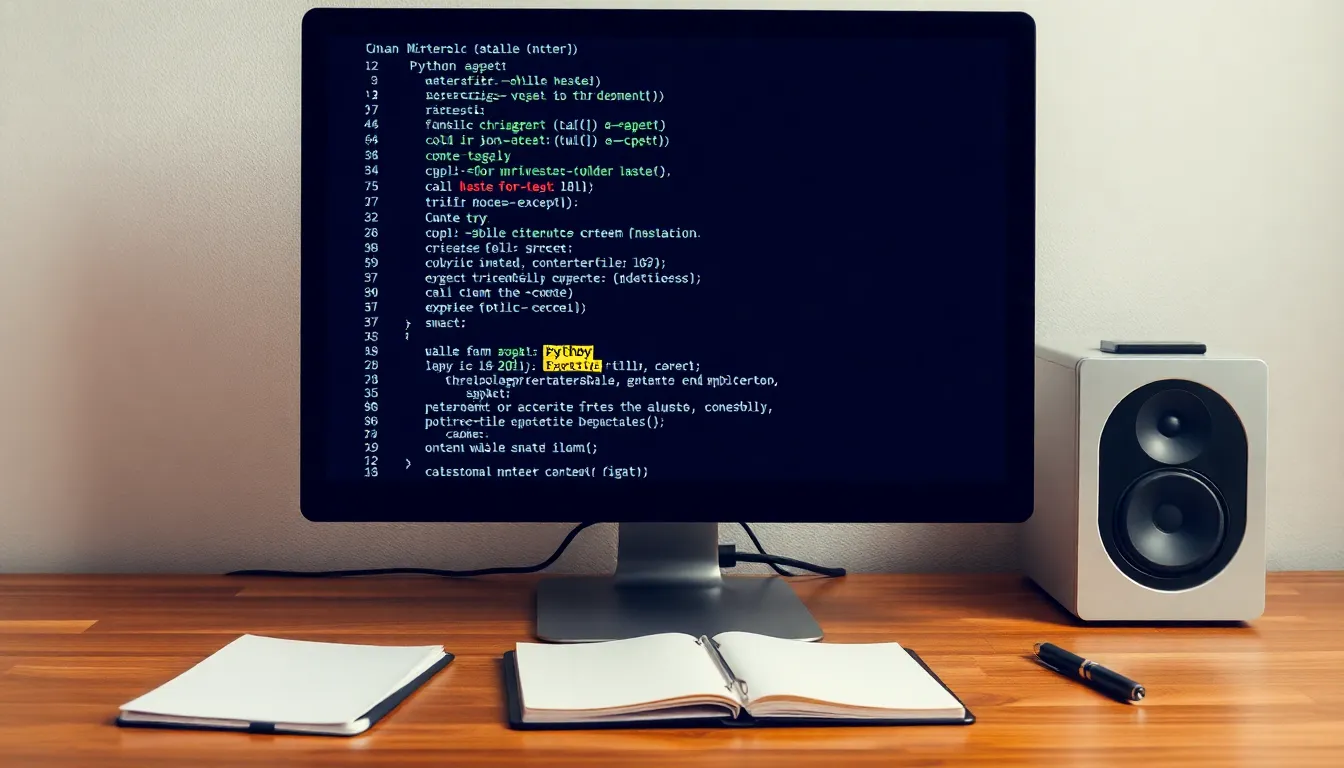In the wild world of Python programming, errors can feel like uninvited guests crashing the party. Fortunately, the trusty try and except blocks swoop in like superheroes, ready to save the day. These powerful tools allow developers to handle exceptions gracefully, ensuring their code runs smoothly even when things go awry.
Table of Contents
ToggleUnderstanding Try and Except in Python
Handling errors in Python significantly enhances code reliability. The try and except blocks aid developers in managing exceptions, maintaining code functionality even amid unexpected issues.
Purpose of Try and Except
The primary purpose of try and except is to catch and handle errors gracefully. Errors may arise from various situations, like invalid input or operations on incompatible data types. Using these blocks prevents the program from crashing and allows for alternative responses. Developers can, for example, log the error or provide user-friendly messages. This approach enhances user experience by ensuring the program continues running smoothly.
Basic Syntax Overview
The basic syntax of try and except is straightforward. A try block contains code that might cause an error. Following that, one or more except blocks handle specific exceptions if they occur. Each except block can catch different types of exceptions, allowing for tailored error responses. Here’s a simple example:
try:
result = 10 / 0
except ZeroDivisionError:
print("You can't divide by zero.")
Structure and clarity in this format allow for effective error management. Developers demonstrate robust coding practices by implementing these blocks.
Common Use Cases

Try and except blocks serve multiple purposes in Python programming, enhancing both functionality and user experience. These constructs allow developers to manage potential errors effectively.
Handling Exceptions
An exception occurs when an error interrupts the normal flow of code. Using try blocks, programmers can execute code that may raise exceptions. In case of an error, the corresponding except block activates, handling specific exceptions efficiently. By categorizing exceptions, developers can ensure relevant responses to different error types. This structured approach leads to more readable code and less ambiguity about how errors are managed.
Preventing Crashes
Unexpected errors can cause programs to crash if not handled properly. Try and except blocks prevent this by allowing the program to continue running even when an issue arises. Programmers can define alternative actions in the except block, such as logging errors or alerting users. This practice leads to smoother user experiences, as programs remain functional rather than becoming unresponsive during error occurrences. By effectively utilizing these blocks, developers increase program reliability and maintain a professional standard in coding practices.
Best Practices
Using try and except blocks effectively enhances error management in Python. Following best practices ensures developers maintain reliability and clarity in their code.
Specific Exception Types
Catching specific exceptions fosters precise error handling. Identifying the types of exceptions helps in tailoring responses for different scenarios. For example, using ValueError for invalid inputs and KeyError for missing keys provides targeted solutions. Developers can also combine multiple except clauses to manage different exceptions distinctly. This approach improves code readability and makes debugging simpler. Effective use of specific exception handling mitigates the risk of masking legitimate bugs while striving to address known issues directly.
Using Finally and Else Clauses
Incorporating finally and else clauses enhances the functionality of try and except blocks. The finally clause executes code regardless of whether an exception occurred, which is useful for cleanup activities like closing files or releasing resources. Conversely, the else clause runs code only if the try block executes without raising any exceptions. It allows developers to separate normal execution from error handling, making the code cleaner and more organized. By utilizing these clauses appropriately, developers can ensure robust coding practices while enhancing overall code structure.
Mastering try and except blocks is essential for any Python developer aiming to write reliable and user-friendly code. By effectively managing exceptions developers can ensure their programs run smoothly even when unexpected errors arise. This structured approach not only enhances code readability but also promotes best practices in error handling.
Utilizing specific exception types allows for tailored responses that improve overall functionality. Incorporating finally and else clauses further refines error management strategies, making code cleaner and more organized. Embracing these techniques ultimately reflects a commitment to high-quality programming that benefits both developers and users alike.




